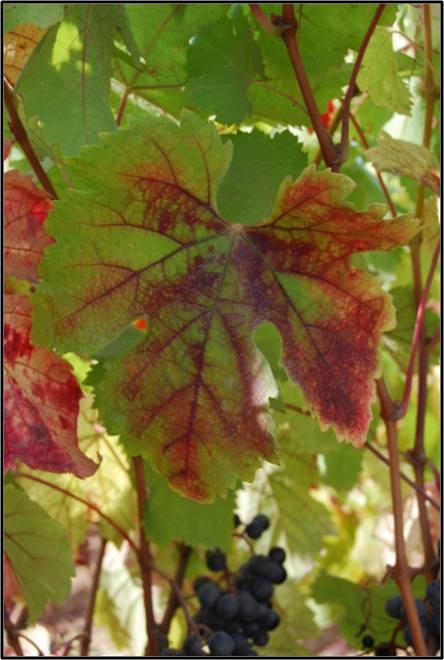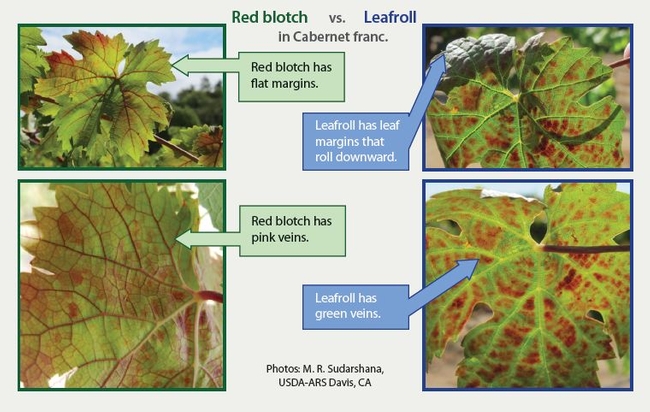
Dr. Deborah Golino, Director of FPS since 1994, started her talk Red Blotch Status at FPS: Classic and Russell Ranch Foundation Vineyards with an anecdote about her recent experiences at grower meetings. She was out to lunch with some members of the viticulture community and asked how to best share information with them. They told her to “tell the news first, so they could relax and listen to the details.”
So I’ll follow suit and start with the news:
All the vines in the new Russell Ranch vineyard have tested free of Red Blotch. Of the 1,610 vines tested so far from the Classic Foundation, only 3 vines are infected; one vine each of Chardonnay 68, Thomcord 02, and Rudy Cabernet 02. Foundation testing information can be found on the FPS website on the left navigation pane under "Foundation Testing Data."
Now to the details:
Grapevine Red Blotch associated Virus (GRBaV) was discovered by USDA-ARS and UC Davis scientists (including FPS’ own Dr. Maher Al Rwahnih!) using the Next Generation Sequencing (NGS) technique. This technique can detect a multitude of microbes using PCR (polymerase chain reaction). Thanks to this advanced technique, we will likely find many new viruses and microbes in the coming years, Golino cautions. However, and let me paraphrase Al Rwahnih here, just because a virus is detected in a vine that demonstrates disease symptoms, does not immediately prove causality.
Finding the virus in symptomatic vines only satisfies the first of Koch’s postulates – which even he abandoned upon the discovery of asymptomatic carriers of infectious agents. There are three more postulates to satisfy before a causal relationship can be established. And that’s where the research on Red Blotch will continue.
But enough with the science lesson.
Testing the two FPS vineyards was a very important step in learning about this virus. Important, and expensive. There are over 4,000 vines in the Classic Foundation and 1102 vines in Russell Ranch. It is thanks to the Grape User fees that all this testing is able to take place. And to date we have spent over $166,000 dollars – nearly one tenth of what it would take to finish our new building (more on the new building in a later blog post) – on testing our vineyards.
I titled this blog entry Finding the Silver Lining because the scientist in me sees one bright and clear. Let’s go back to the news – all the vines in Russell Ranch have tested free of GRBaV. And you know what’s so amazing about that? Vines planted in the Russell Ranch vineyard were sent through the 2010 protocol a therapy which uses micro-shoot tip culture to propagate material, before planting – this protocol was established before GRBaV was even on the radar! This is our success story; this is our silver lining. Micro-shoot tip culture can be used as a therapy for known and unknown pathogens and microbes.
There is more to this success story, of course.

Our next priority is to determine how the virus spreads. Because if the virus isn’t at FPS, how is it getting into the vineyards?
For more information on Grapevine Red Blotch, please see the National Clean Plant Network for Grapes (NCPN-Grapes) fact sheet attached or visit the Integrated Viticulture website. NCPN-Grapes will be hosting a Special Webinar on Red Blotch on March 27, see the attached announcement. Remember that there are still vines to test in the Classic Foundation, so check the testing information on our website for progress.
Attached Files: